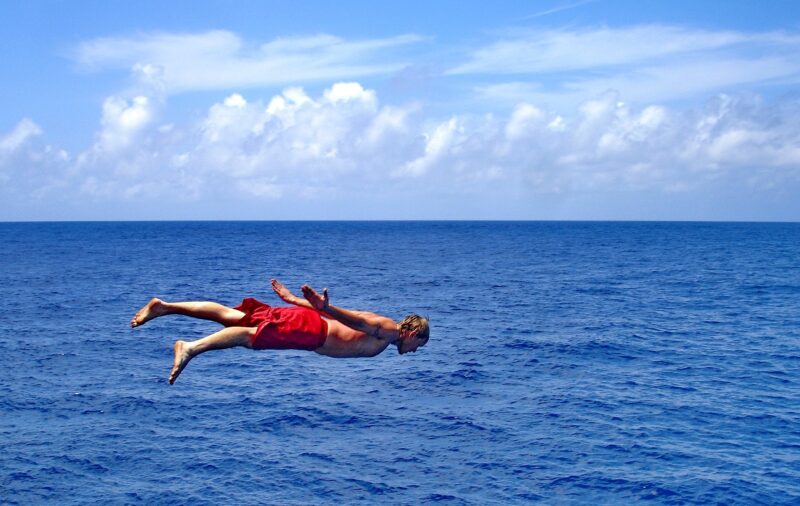The Mystery of the Bermuda Triangle: Separating Facts from Fiction
November 16, 2024

The Bermuda Triangle, often shrouded in intrigue and speculation, has captured imaginations worldwide for decades. Spanning a region in the western part of the North Atlantic Ocean, the area is delineated by points in Miami, Bermuda, and Puerto Rico. While its reputation as a mysterious zone for disappearing ships and planes has been solidified by pop culture, the factual basis for these incidents deserves examination.
1. A Brief History of the Bermuda Triangle
The term “Bermuda Triangle” was first coined by writer Vincent Gaddis in his 1964 book, “Invisible Horizons: True Mysteries of the Sea.” Since then, numerous books, documentaries, and movies have contributed to the legend, often amplifying claims of paranormal activity and unexplained phenomena. However, the truth of these stories often lies in exaggerated reports and the human propensity for sensationalism.
Incident reports date back to the 19th century. One of the most notable cases includes the disappearance of Flight 19, a group of five TBM Avenger torpedo bombers that vanished in December 1945 during a training flight. The famous rescue plane, the Martin Mariner, also mysteriously disappeared while searching for Flight 19. These events, among others, sparked significant public interest and speculation surrounding the triangle.
2. Notable Incidents in the Bermuda Triangle
To understand the enigma surrounding the Bermuda Triangle, it’s crucial to review specific incidents that have fueled its mythos. Comparatively, when scrutinized, many of these episodes have logical explanations:
- The USS Cyclops: In March 1918, the USS Cyclops, a navy cargo ship, disappeared without a trace while sailing from Barbados to Baltimore. It had over 300 men and 10,000 tons of manganese ore onboard. Despite searches, no wreckage was discovered. The probable cause was found to be overloading and rough weather conditions.
- Flight 19: The aforementioned Flight 19, consisting of five bombers, and the rescue plane were lost to the ocean. It was later revealed that the flight’s leader, Lieutenant Charles Taylor, got disoriented due to incorrect readings and navigational errors, which likely contributed to the incident.
- The SS Marine Sulphur Queen: This tanker ship vanished in February 1963 while traveling through the Bermuda Triangle. Despite thorough searches, it was never found. Investigators later determined that the ship likely experienced catastrophic failure due to structural issues, rather than anything mysterious.
While these stories often invoke fear and skepticism, the reality is more mundane. Most incidents attributed to the Bermuda Triangle can often be explained by natural phenomena such as storms, human error, and the region’s heavy maritime traffic, making it statistically more prone to disappearances.
3. The Science Behind the Myths
The science of credibility often conflicts with the lore of the Bermuda Triangle. With this in mind, let’s look at some scientific explanations for why the Bermuda Triangle may seem more dangerous than other heavily trafficked areas:
- Magnetic Anomalies: Some conspiracy theorists claim that unusual magnetic variations in the Bermuda Triangle could interfere with navigational instruments and cause vessels and planes to veer off course. However, scientific studies have debunked this notion, proving that all compass readings are reliable in the area.
- Methane Hydrates: Scientists have studied the presence of methane hydrate deposits on the ocean floor, which could potentially cause explosive eruptions. These eruptions can create large bubbles, leading to the sinking of ships, but there’s no significant evidence tying this phenomenon specifically to the Bermuda Triangle.
- Weather Patterns: The Bermuda Triangle frequently experiences unpredictable weather, including sudden storms and hurricanes, that can create hazardous conditions for ships and aircraft. Areas of warm water, storms, and the unpredictability of the ocean are valid concerns, not evidence of the supernatural.
The reality is that the Bermuda Triangle’s puzzling reputation stems more from interpretation than from facts based on scientific scrutiny. Many experts argue that when laid bare, the mysteries simply show the complexity of life at sea—not supernatural interference.
4. The Cultural Impact of the Bermuda Triangle
The mystique surrounding the Bermuda Triangle has made it a rich topic for cultural exploration, spawning countless theories, books, and documentaries. The enigma has ingrained itself into popular culture, leading to:
- Literature: From novels to essays, writers have explored the Bermuda Triangle’s secrets, often embellishing facts for dramatic effect. Notable examples include Charles Berlitz’s book, “The Bermuda Triangle,” which contributed significantly to the area’s mythical status.
- Television Shows and Films: Numerous documentaries and fictional films have been produced, presenting the Bermuda Triangle as a dangerous and supernatural zone. Significant scores of viewers are drawn to these productions, perpetuating the legend.
- Travel and Tourism: The mystical status of the Bermuda Triangle has also attracted tourists eager to witness the phenomenon. Tour operators offer tours to the region, fueled by adventures and explorations of the area’s lore, reinforcing the intrigue further.
While their conclusions may be sensational, popular culture plays a pivotal role in the Bermuda Triangle’s allure.
5. Conclusion: Myths vs. Reality
In conclusion, the Bermuda Triangle remains an illustration of humanity’s fascination with the unknown. Although the reality behind the mysteries can often be explained through natural phenomena, the cultural impact—supported by sensational journalism and literature—has helped perpetuate the myth that the Bermuda Triangle is more than just a geographical region. The majority of the so-called mysteries are rooted in logical explanations, illustrating how easily we can weave reality into fiction through storytelling.
In understanding the Bermuda Triangle, it becomes clear that while the unknown can be eerie, the true nature of these incidents reinforces the importance of critical thinking. As explorers of information, it is our duty to sift through sensational claims and focus on facts.
In summary, the Bermuda Triangle serves as a reminder of both the power of myth in shaping perceptions and the necessity of grounding our understanding in reality. Whether one views it as a hub of mystery or simply a geographical location, it continues to evoke curiosity, reflection, and exploration among those drawn to its fascinating history.







